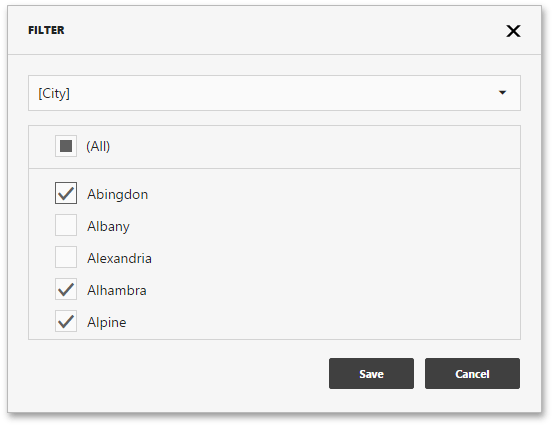Filtering
- 2 minutes to read
The Web Dashboard allows you to apply filtering to individual dashboard items, filter SQL queries or entire data sources. See Filtering for more information on common filtering concepts.
This topic describes how to filter data in dashboard items using the Filter Editor.

Invoke Filter Editor
To apply filtering to the dashboard item, select it and invoke the dashboard item’s Binding menu. Then, go to the Data / Filtering section and use Click to set Filter Criteria.
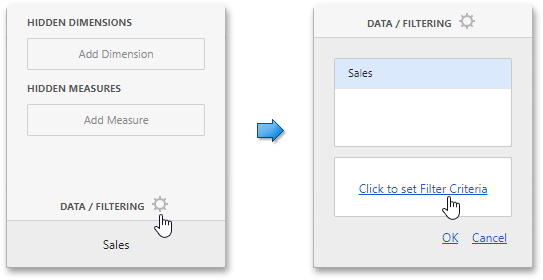
This invokes the Filter Editor dialog that allows you to specify filter criteria.
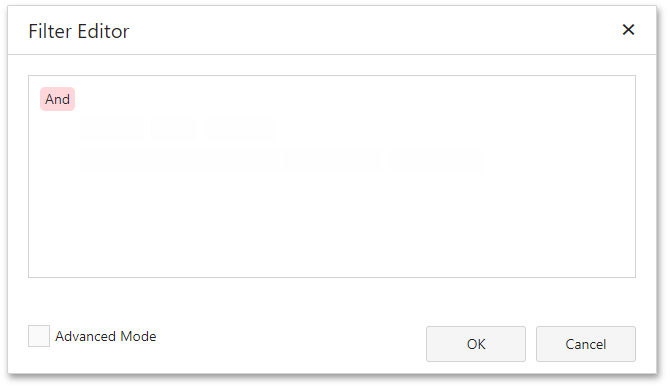
Use Filter Editor
The Filter Editor displays filter criteria as a tree where individual nodes specify simple filter conditions. The root node is the logical operator combining all the conditions. You can change this logical operator by clicking it and selecting the desired type.
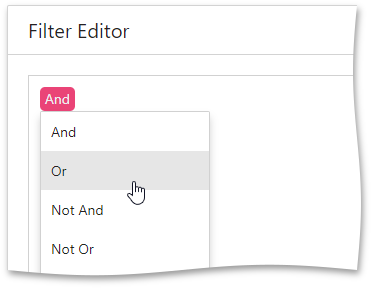
Click the plus button next to the operator to add a new condition or group.

You can select the dimension (including hidden dimensions), …

… a comparison operator …
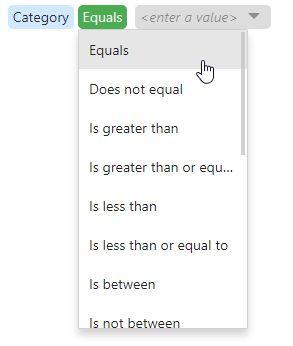
… and an operand value type in the dedicated value box.

The following operand types are available:
Value - Allows you to compare dimension and static values.
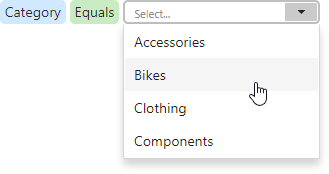
Property - Compares different dimension values.
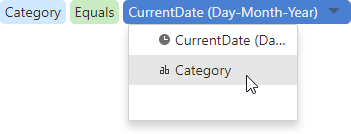
Parameter - Allows you to compare dimension and dashboard parameter values.
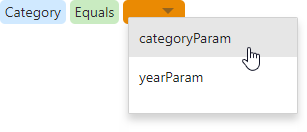
Click the filter condition’s  button to delete it.
button to delete it.
Text-Based Filtering
The Advanced Mode allows you to enter a custom filter string.
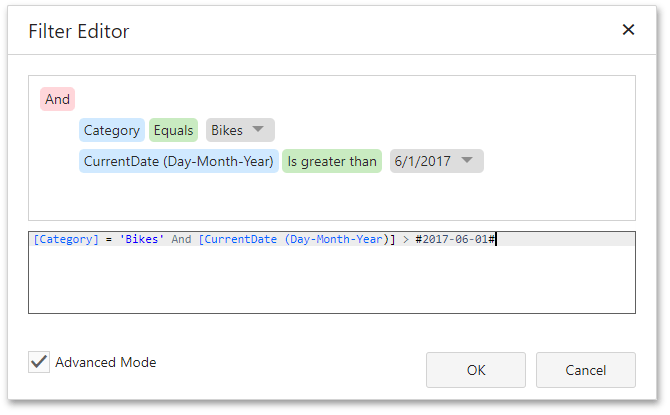
Consider the following syntax conventions when using text-based filter conditions:
- Insert a dimension by enclosing its name in square brackets (for example, [Category]).
- Denote string values with apostrophes (for example, ‘Bikes’).
- Enclose date-time values with hashtags (for example, #2017-06-01#).
- Reference dashboard parameters by adding a question mark before their names (for example, [Category] = ?categoryParam)
This editor supports intelligent code completion (suggesting functions, parameters, and available data columns as you type).

The ![]() icon appears if a condition contains errors.
icon appears if a condition contains errors.
OLAP Filtering Specifics
You cannot apply filtering by building complex filter criteria in OLAP mode. Instead, you can filter dimension attributes and hierarchies by manually selecting the values you want to include or exclude from the dashboard.
Dimension Attribute | Dimension Hierarchy |
|---|---|
The Filter Editor contains a list of all values for dimension attributes.
| Displays hierarchies as a tree, allowing you to filter individual values at any hierarchy level.
|
